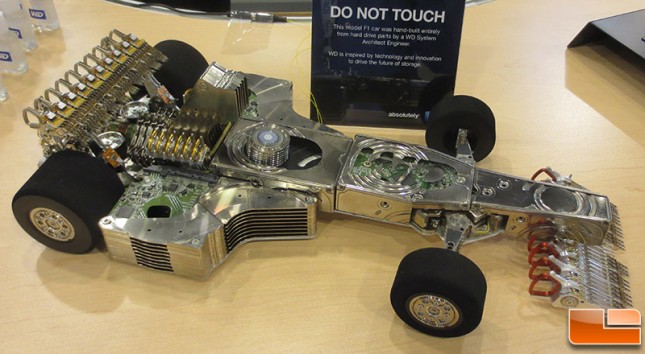... The stuff the outer casing was made of was incredible. A full swing blow with a 21oz ball pein hammer just bounced off. ...
Polycarbonate, intended as a containment mechanism if the disk decided to go totally Tonto at a few thousand RPM. Those spindles are basically flywheels and, depending on the drive model, weigh a few kilos to several hundred kilos. That, spinning at a few thousand RPM, has not insignificant energy bound up in its motion. It used to be a standard practice for bored technicians and programmers to pull out the specs for proper man sized disk drives, calculate the kinetic energy of the spindle at full working speed and work out how much of the building it would demolish on its way out if it ever broke free of its bearings.
Indeed, but it is piffle compared to the rotational energy in a power station steam turbine.
I remember that, as I kid, I had a book on modern transport in which there was a bus that spun up a flywheel when breaking, and used the energy when pulling away. I presume that going round a corner wasn't too difficult, since by then the flywheel ought to have slowed down.
 Now that's some proper gyroscope... a big boxer twin with shaft drive!
Now that's some proper gyroscope... a big boxer twin with shaft drive!Ever ridden a BMW R-series? You can learn how to handle the gyro effect; even use it to your advantage.

We used to do the same mental exercises; but there's a fundamental flaw in the logic most apply to the calculation: Calculating the damage as presented by the total mass. In reality, if the total mass of the thing broke loose of its bearings, it would do jack-sh** except sit there spinning like a top until the shaft drilled a hole into the floor; in fact, it would be very hard to make it do anything BUT that unless you were stupid enough to poke it with something, and poke it VERY HARD. In reality, you have to calculate the terminal velocity of a PIECE of each disc as if the thing had shattered.

We spent many an afternoon arguing over the real kinetics involved; the likelihood of more than one disc grenading, and how much actual mass that one piece would likely have, as the platters on these things were actually a torus, NOT a disc. The general consensus we arrived at was that it was reasonable to assume 2 or 3 platters at most, and projectiles approximating 1/3 to 1/4 the mass of each platter, as we conjectured that the mass of the rest of the assembly would tend to make it keep spinning in place unless a really big piece of the enclosure jammed it up; then it would essentially become a great big one of these...
The odds of a platter breaking into less than 3 large pieces was pretty small, we figured; that of course prompted us to go off on tangents, like kill counts arrived at by trying to figure out how many fragments a disc could possibly break into with sufficient mass to escape the enclosure with sufficient velocity to actually still go through someone. This of course was all predicated upon models using ceramic/glass substrate assemblies, as even allowing for decades of vibrational embrittlement the odds of a forged aluminum platter grenading were "Statistically insignificant".
 http://www.legitreviews.com/250-hard-drives-will-make-one-epic-f1-car_127581
http://www.legitreviews.com/250-hard-drives-will-make-one-epic-f1-car_127581I tripped over this yesterday while looking for other stuff... kindof makes Magna-Dragon seem a bit primitive. But in his defense, he is held together ONLY by magnetism; this HDD F1 car was fabbed up by a WD engineer with a full machine shop at his disposal.
In other news... -group-therapy-thread/?action=dlattach;attach=480326;image)
$15 HP laptop spent all night downloading and is still installing over 1GB of updates; this AFTER I installed the 485MB October '15 update rollup off my DIAGS thumb drive so it COULD connect and update. I am SO gonna make an image of it the INSTANT it finishes... then maybe ghost it all over to that $25 SSD from MicroCenter. The T95N TV Box not only works, it is 4K-capable and has Kodi pre-installed. Nifty...
K... I need to go back and finish my rounds of the local pawn shops... I'm vapor.
mnem
In God we trust... all other pay cash.